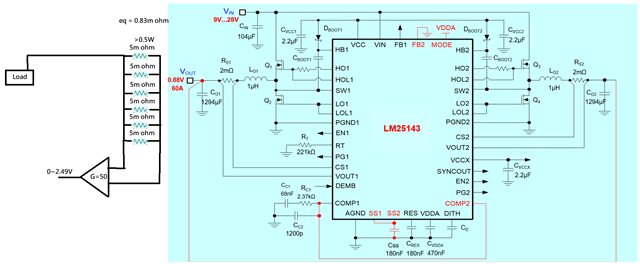Other Parts Discussed in Thread: UCD90124, LM5143, LM5117
Hi TI expert,
My project is to design PSU circuit for Xilinx FPGA Versal Prime VCCINT, I had study TI reference power solution but that design over my requirement and using too much space.
So I check that the TI part LM25143 may also fulfill my requirement, do this part used for power FPGA before?
Below are my Design Spec
Vin: 12V / 24V
Vout: 0.88V
Iout(max): 40~60A
Vripple +/-2%
Also attaching the quickstart design tool table for you understand the choosen part.
LM(2)5143-Q1 quickstart design tool - revB2_For_Xilinx_Versal_Prime.xlsm
Thanks a lot.
Alex.


